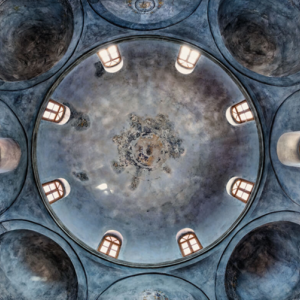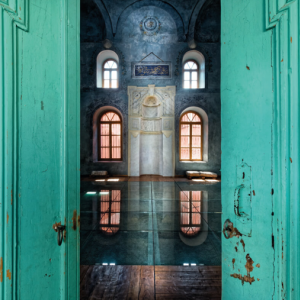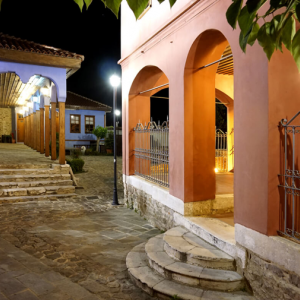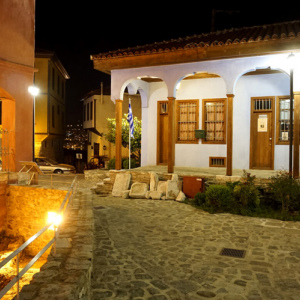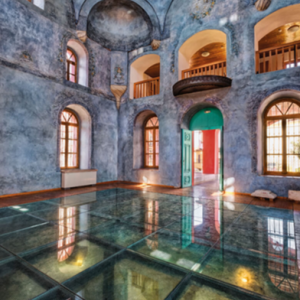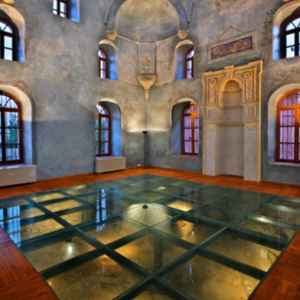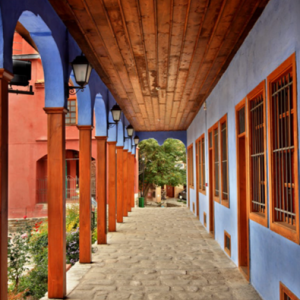
Halil Bey Mosque (Old Music)
General descriptionMuslim populations occupied the privileged parts of the cities (the safest or those with climatic and topographical advantages) and moved the local Christian population to other areas. Apparently this was also the case in Kavala in the 16th century. The location of Khalil Bay's mosque is indeed advantageous. In the center of the peninsula, near the castle (for shelter in case of danger), in a place high and relatively flat and on roads that lead on the one hand to the citadel and on the other hand to the gates of the walls of the peninsula. All this, perhaps the existence of a large mentresse (seminary) in the mosque complex, leads us to the thought that this was the area where the Muslim settlers were first installed and set up the first mahala.
The mahalades of the Ottoman cities consisted of people of the same religious group, formed and developed around a religious center (mosque, temple, synagogue) and the names of the Muslims came from the name of the donor of the mosque. The district of Khalil Bay refers to a tax file of 1569 (we do not know of course its size and limits), therefore the mosque must have been built at the time of the reconstruction of the city, around 1530. It was the second largest and most important mosque of Kavala (after the mosque of Ibrahim Pasha, the present church of Agios Nikolaos).
In the place of the mosque of Khalil Bay existed, according to archaeological findings and oral tradition, the Byzantine church of Agia Paraskevi. Of course, we do not know whether its building still existed after the occupation of Christopolis, whether it was in use, and whether there was therefore a Christian quarter in this place until the beginning of the 16th century. However, during the first centuries of Turkish rule it was common to build mosques in the place of churches or to convert churches into mosques in order to meet the religious needs of the new inhabitants of the cities.
In this case it is most likely that the church was originally converted into a mosque and that the existing mosque was later built in the same location. In this area, recent excavations of the 12th Ephorate of Byzantine Antiquities revealed the first Christian worship building of the enclosed city (visible from the glass floor of the mosque), as well as a small cemetery of the Byzantine period.
The mosque was part of a wider complex that included a mentressé (seminary, with eight rooms for students), which has also been saved in good condition. At the beginning of the 20th century, a first-tier girls' school was also opened in the complex.
With the arrival of refugees in the mosque and in the small rooms of the mendre, refugee families settled for many decades. In the period 1930 - 1940 the mosque housed the Philharmonic of the Municipality and thus acquired the name "Jami of Music". At the same time, the fence wall of the religious building must have been demolished, so the current small plateau was created. The minaret was torn down in the 1950s.
Mosques and mosques have recently been restored and restored (except for the minaret) and various considerations are being considered for their exploitation and integration into the life of the district and the city.
Access to the interiors is not possible for people with wheelchairs (there are steps).
- Ali Mehmet 26, Kavala 65201
- +30 2513 500100
Images
